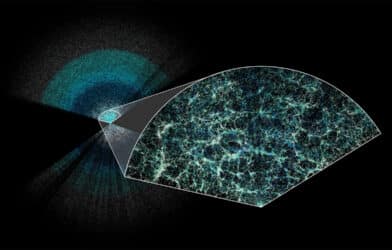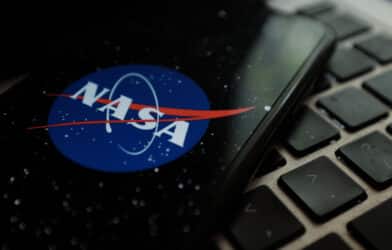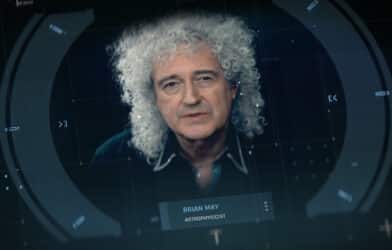Researchers warn that the BlueWalker 3 satellite could also cause interference to work by radio astronomers.
Astronomers have sounded the alarm over the potential of large satellite constellations to interfere with night-sky observations and radio astronomy. A recent study showcases the astonishing brightness of a prototype satellite, the BlueWalker 3, making it one of the brightest objects seen in the night sky.
“Constellations” in this context doesn’t refer to star patterns like the Big Dipper or Orion. Instead, it’s a term used by satellite companies to describe groups of hundreds of satellites, aiming to deliver mobile or broadband services worldwide. These satellites, intended for low-Earth orbit, are relatively large and could disrupt our views of the stars.
The modern luxury of having universal internet and mobile phone access is partially thanks to these satellites, but their glow might come at a price.
‘Night Sky Should Be Protected’
This buzz began when BlueWalker 3, a prototype satellite launched by AST SpaceMobile on 10 September 2022, stood out as an extraordinarily bright object in the night sky shortly after its release. This satellite serves as a preview to a larger planned constellation of over a hundred similar satellites designed for mobile communications.

Led by astronomers from the IAU Center for the Protection of the Dark and Quiet Sky from Satellite Constellation Interference (CPS), the team engaged in a global observing campaign, capturing details of BlueWalker 3’s brightness over 130 days. Their data highlighted an intense brightness spike, attributed to the deployment of the satellite’s massive 64-square meter antenna array—the largest of its kind ever sent into low-Earth orbit.
According to Siegfried Eggl, an aerospace engineer at the University of Illinois Urbana-Champaign, some of the recently launched satellites are as bright as some stars we see at night. “From our observations, we learned that AST Space Mobile’s BlueWalker 3…reached a peak brightness of magnitude 0.4, making it one of the brightest objects in the night sky,” Eggl says in a statement.
To provide perspective, the brightness of stars we can typically see ranges from minus 1 (very bright, like the star Sirius) to 6 magnitude. The satellite’s brightness is alarmingly close to that range.
But the problem doesn’t stop there. The race to dominate space with communication satellites is intense. “Starlink already has permission to launch thousands of satellites, but they’ll probably get their full request of tens of thousands granted eventually,” notes Eggl. And Starlink is just one provider; other countries, including Europe, China, and Russia, also plan to launch their own. “Just those in the United States being negotiated with the FCC amount to 400,000 satellites being launched in the near future,” he adds.
To grasp the magnitude of this issue: humans can typically see about 1,000 stars with the naked eye. Introducing hundreds of thousands of moving, bright satellites could irrevocably alter our view of the night sky.
Dr. Dave Clements from the Department of Physics at Imperial College London (ICL), part of the research team studying the satellite, emphasizes the significance of preserving our nightly planetarium. “The night sky is a unique laboratory that allows scientists to conduct experiments that cannot be done in terrestrial laboratories,” he says in a media release. “The pristine night sky is also an important part of humanity’s shared cultural heritage and should be protected for society at large and for future generations.”
BlueWalker 3 Satellites Put Radio Telescopes At Risk
But it’s not just the visible brightness that’s causing concern. BlueWalker 3 also poses a potential threat to radio astronomy. Radio telescopes scan the cosmos by detecting specific wavelengths. The satellite, unfortunately, operates on wavelengths dangerously close to what these telescopes observe.
“BlueWalker 3 actively transmits at radio frequencies that are close to bands reserved for radio astronomy, and existing observatory protections from radio interference may not be sufficient,” warns Dr. Mike Peel, from ICL’s Department of Physics.
While the IAU and CPS acknowledge the importance of these satellite constellations in advancing global communications, they stress the need to minimize their impact on astronomical research.
Finding A Solution
Addressing this challenge, satellite operators, including SpaceX, are looking for solutions. “Starlink is looking at making their satellites’ surfaces darker…But the absorption generates heat,” explains Eggl. This could lead to complications in space where heat is a significant engineering concern. Another approach by SpaceX is tweaking their satellite solar panels to reflect light in a different direction, away from Earth.
However, not all satellite providers can adapt these solutions easily. AST’s satellites, which are designed to communicate with ground cell phones, are huge. Making them smaller or adjusting their orientation could hamper their performance and even interfere with radio astronomy sites.
The silver lining? The astronomical community is keen on working with the space industry to address these concerns. “We are trying to work with the space industry, where possible,” Eggl emphasized. “We want to solve this together…because that’s the fastest route to get things done.”
Astronomers worldwide will keep a close eye on BlueWalker 3, with plans to study its thermal emissions later this year. This debate is set to continue at the forthcoming IAU Symposium titled: “Astronomy and Satellite Constellations: Pathways Forward” this month.
As we move forward in the age of global connectivity, it’s crucial to strike a balance between technological advancement and preserving the cosmos that has inspired humanity for generations.
The researchers’ data for this study is published in the journal Nature.












